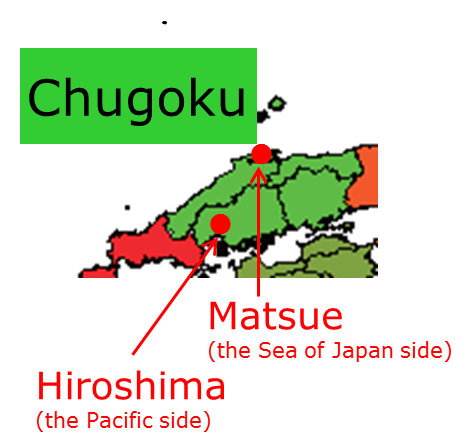
Figure 1 Location of Matsue City and Hiroshima City
Figure 2 Seasonal variation of meteorological elements in Matsue City Left panel: The green, red and blue lines indicate monthly averages of daily mean, maximum and minimum temperatures, respectively. The blue and brown bars show monthly precipitation amounts and monthly sunshine durations, respectively. Right panel: Purple bars indicate monthly snowfall amounts.
Figure 3 Seasonal variation of meteorological elements in Hiroshima City The green, red and blue lines indicate monthly averages of daily mean, maximum and minimum temperatures, respectively. The blue and brown bars show monthly precipitation amounts and monthly sunshine durations, respectively. Winter (December-January-February)
Figure 4 Weather chart for 00UTC on 10 December 2012 In winter (December-January-February), the Siberian High develops over the Eurasian Continent and the Aleutian Low develops over the northern North Pacific. Prevailing northwesterly winds cause the advection of cold air from Siberia to Chugoku and bring heavy snowfall to the Sea of Japan side of Chugoku (upstream of mountainous land) and sunny weather to the Pacific side (downstream of mountainous land). Spring (March-April-May)
Figure 5 Weather chart for 00UTC on 3 April 2012 In spring (March-April-May), migratory cyclones and anticyclones that alternately move eastward prevail across Japan. Temperature increases (decreases) in front (back) of cyclonic systems due to warm southerly (cold northerly) flow. Temperature in Chugoku rises gradually with large short-term variations. Kosa (Aeolian dust transported from deserts or semi-arid areas of the Asian continent by westerly winds, resulting in yellow skies and haze) is sometimes observed over Chugoku. The sunshine duration is long in the second half of spring due to the predominance of anticyclonic systems. Summer (June-July-August)
Figure 6 Weather chart for 00UTC on 16 July 2012 The period from early June to the middle of July is the rainy season (known as the Baiu). Its precipitation is caused by a stationary front, called the Baiu front, which forms where a warm maritime tropical air mass meets a cool polar maritime air mass. In the second half of summer, the North Pacific High extends northwestward around Japan, bringing very hot, humid, and sunny conditions, sometimes accompanied by temperatures of 35°C or above, to Chugoku. Southerly winds around the western edge of the North Pacific High sometimes bring very hot air to the Sea of Japan side (the Foehn phenomenon). Monthly precipitation amounts for August are small in some areas around the Seto Inland Sea. Autumn (September-October-November)
Figure 7 Weather chart for 00UTC on 12 October 2009 In autumn (September-October-November), temperatures in Chugoku fall gradually. The autumnal rain front and tropical cyclones affect the autumn weather of Chugoku. In October, the frequent passage of anticyclonic systems brings sunny conditions and refreshing air to Chugoku. The frequencies of cold northwesterly flow across Japan shows an increasing tendency in November. |